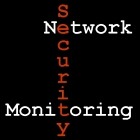Review of The Design and Implementation of the FreeBSD Operating System Posted
Amazon.com just posted my five star review of The Design and Implementation of the FreeBSD Operating System . I was excited to see this update of the 1996 classic The Design and Implementation of the 4.4BSD Operating System finally published. From the review: "I have been administering FreeBSD systems for four years, and I read 'The Design' to get a better understanding of the system 'under the hood.' This book is definitely not for beginners, and intermediate users like myself can become quickly overwhelmed. Nevertheless, I am very glad FreeBSD developers like McKusick and Neville-Neil took the time to document the kernel in this book." You can access the authors' works at Addison-Wesley or at McKusick.com and Neville-Neil.com .

